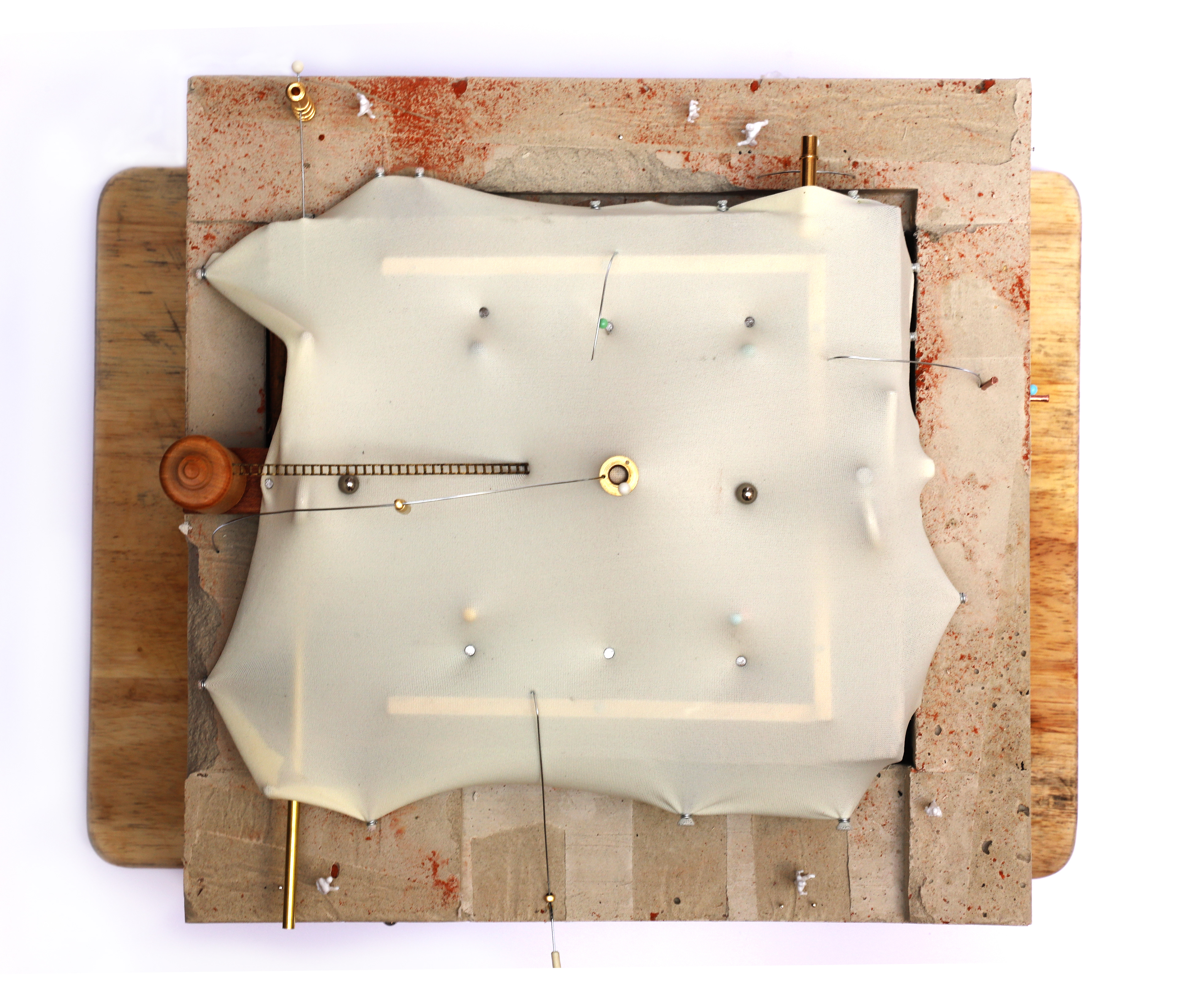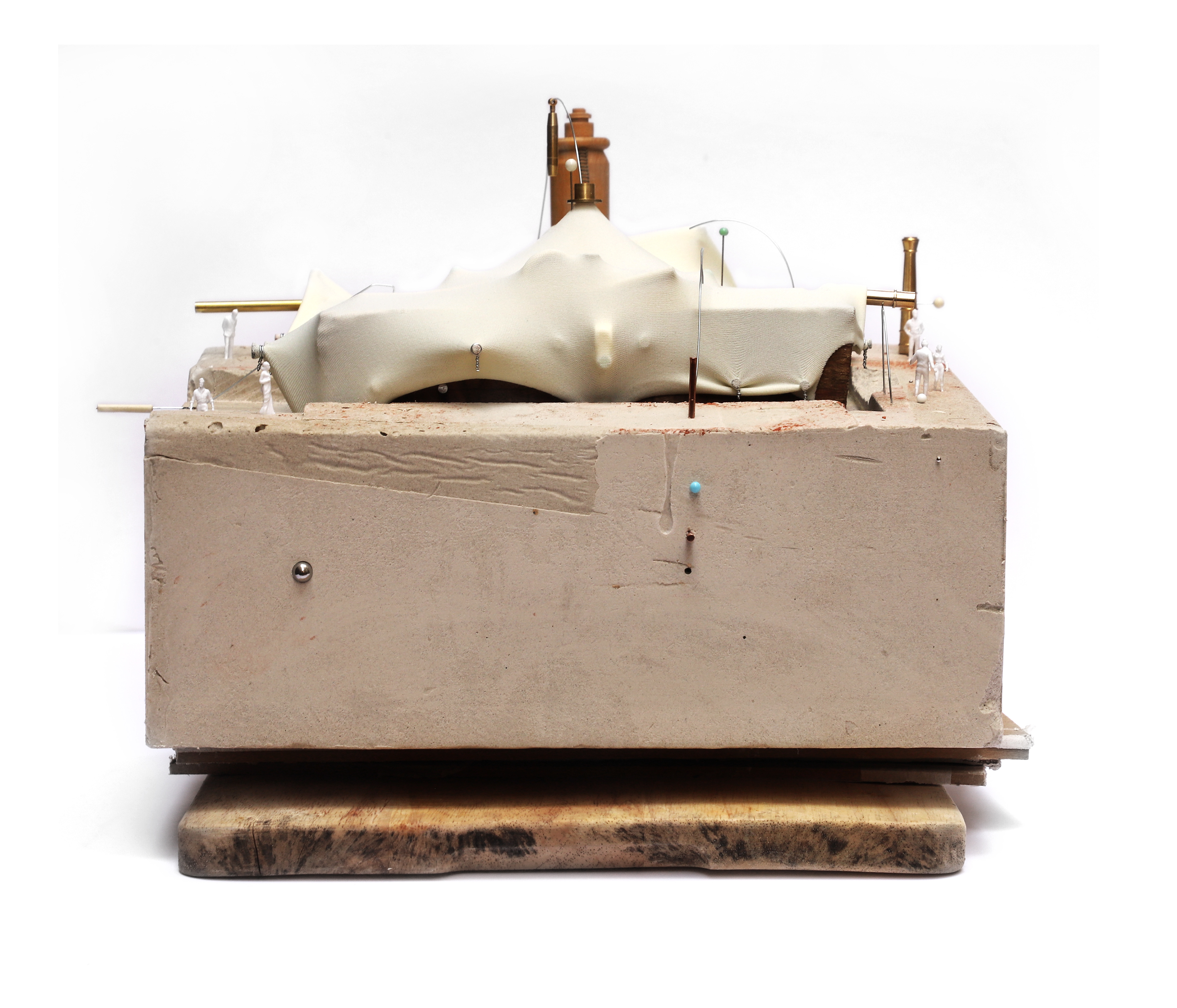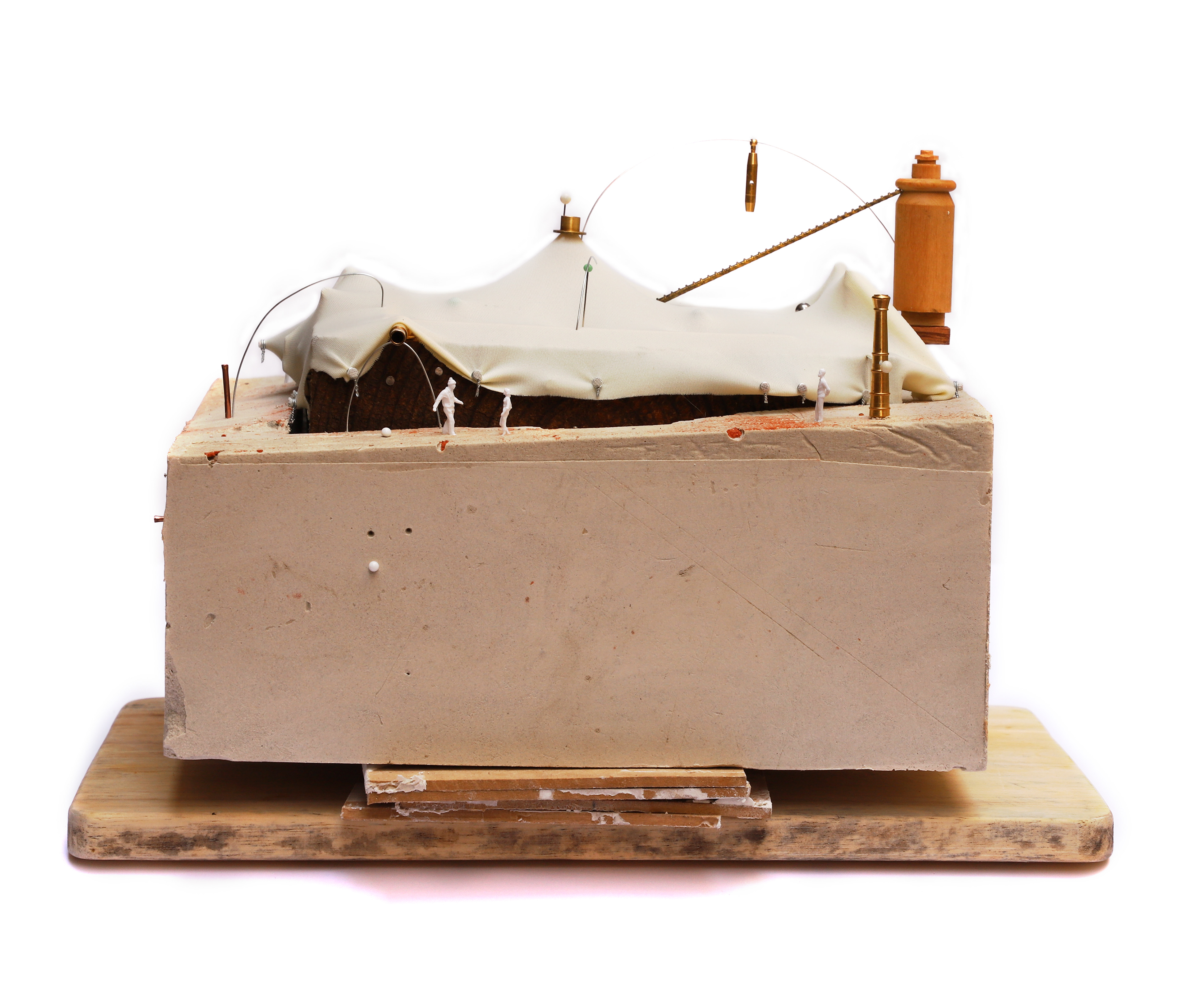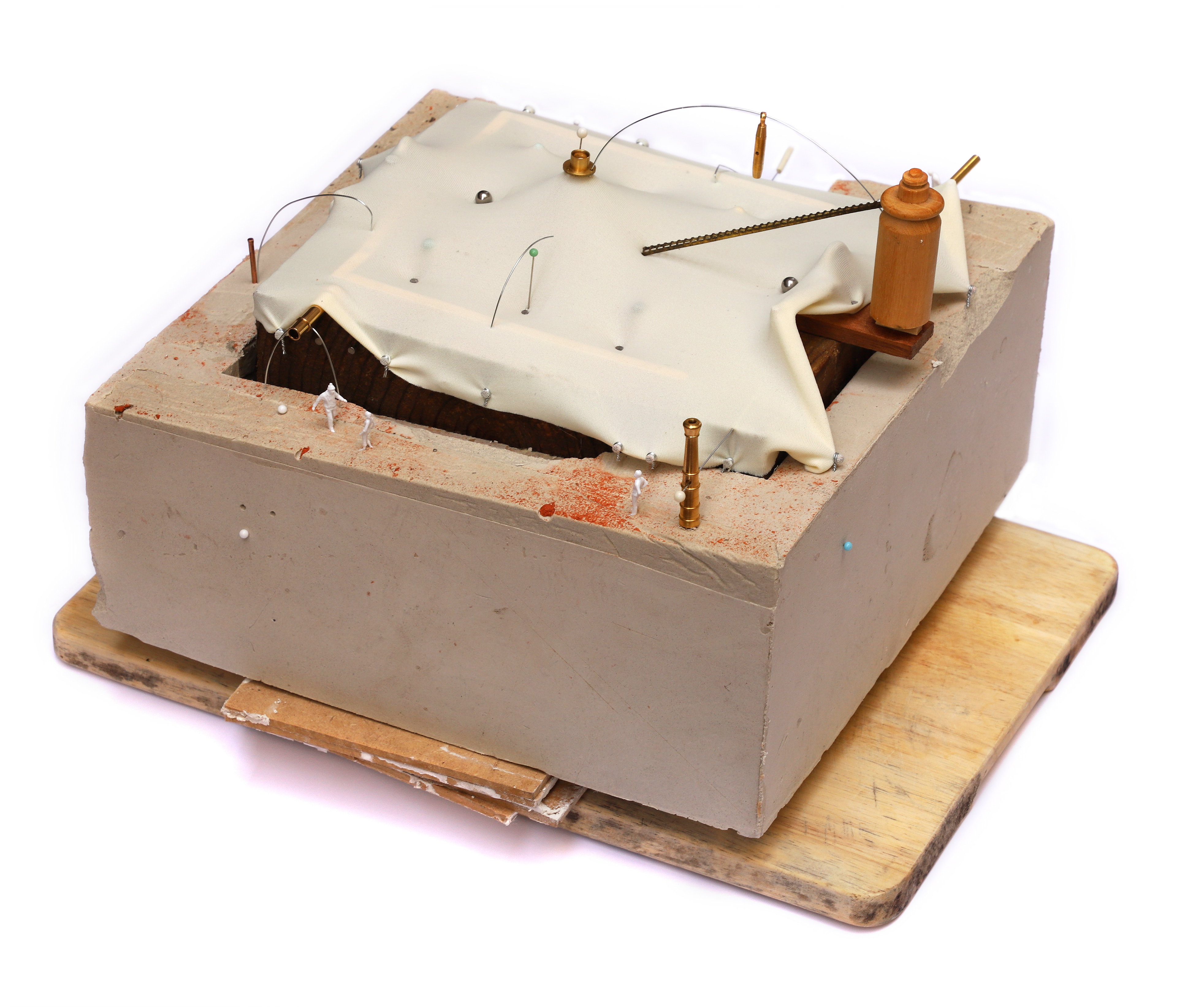The secret life of a public square
About the structural relations between urban objects and language, a methodology for the city.
There is a fundamental correlation between the human subject and the (urban) objects it creates which we (architects) don’t consider inside the profession. This relationship is crucial for understanding how the city relates to its users. This project develops the idea that it is in linguistic where we may find the roots of the given relationship, and in order to discover new ways to transform our cities, we need to trace the common structural values shared by both entities (spatial and linguistic). By doing so, we would obtain a more fundamental and anthropological quality of space: its structural/social narrative.
...
...
This project is part of an ongoing research. It tries to comprehend how the urban space is articulated, and how do the urban objects relate to society. There is a crucial conflict between the way in which society experiments space, and how space is created. This conflict has been at the centre of a philosophical discussion, which focusses on the relations between the subject and object. I believe that the roots of the subject-object conflict in architecture lies in our lack of understanding of the essence of the urban objects. At the initial stages of human evolution, the objects were directly associated with cultural requirements. In the modern world there has been an increasing disconnection between nature and society. What were before direct consequences of our humanity, now have become increasingly alien objects. We need to rethink the never-ending production of objects and our relationships with them. But how to start such an analysis? I believe that the answer can be found in linguistics. The signifier/signified relation in Ferdinand de Saussure’s theory creates a clear base. This relation can be extrapolated to the architectural realm with fascinating consequences. In this project I assume the subject as the producer of space, and the object as the urban constructions that society creates. Location of the project: the Plaza de los Carros in Madrid. This place is a clear manifestation of the essence of a Public Square. We can define in the square objects that respond to linguistic terms which help us to filter the essence of the place.
Why is this important? We need to think of new ways for articulating the urban objects that already exist in the specific context. The construction process must result from understanding the essential experiential qualities of space, Architecture is not just related to matter but to culture, and actions like addition, extraction, connection or cultural appropriation can be equally effective.
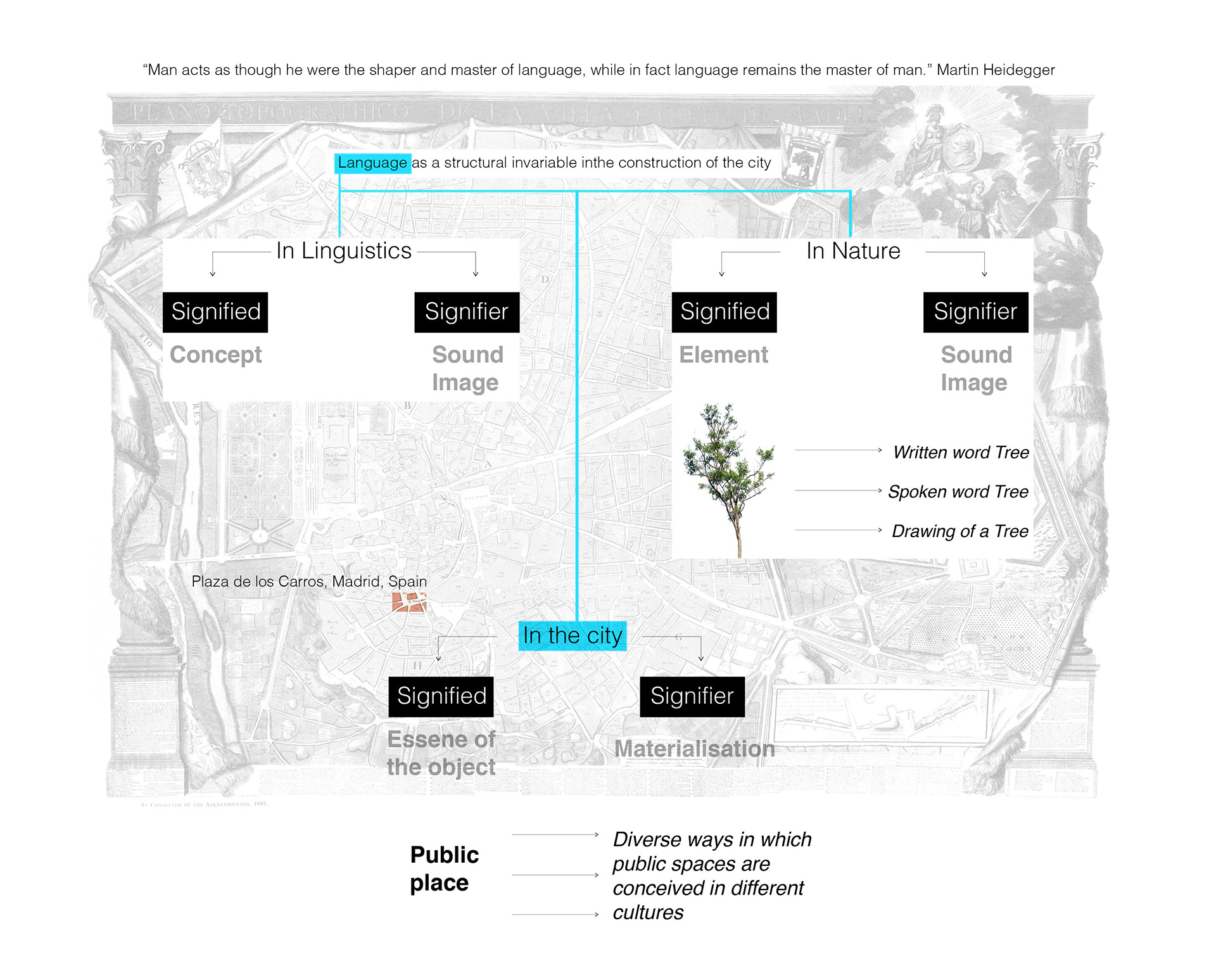
How is the urban space is articulated, how are the urban objects created and how do they relate to the social actor that creates them? I believe that there is an essential contradiction between the way in which society experiments space, and the way in which that very space is created. This conflict has been at the centre of an important philosophical discussion, which focuses in understanding the correlations between the subject and the object. In the current project I am focusing in the subject as the producer and user of the space, and the object as the urban constructions which society creates.
I consider that the roots of the subject-object conflict in the architectural realm is motivated by a straightforward idea: the disarticulation and disconnection of our understanding of the essence of the urban objects. In other words, every human creation has had historically a direct connection with specific uses, outcomes and cultural structures -before design-; architecture is not out of this equation, and what we call vernacular or primary in the history of the profession, is understood as such because it has a direct connection with basic human needs and organisational strategies. At the initial stages of human evolution, the urban objects (adopting this name even thou we cannot speak about urban planning then) were always directly associated with cultural requirements, relations and basic ordering. In the modern world there has been an increasing disconnection between nature and society, and that reflects in our -mis-understanding of our own role as creators and inhabitants of our creations. What were before direct consequences of our humanity, now have become continuously disconnected and increasingly alien objects. When facing this reality, it is fundamental to take a moment to analyse our relation to the city and rethink the never-ending production of objects, architectures, alienated from our inner nature.
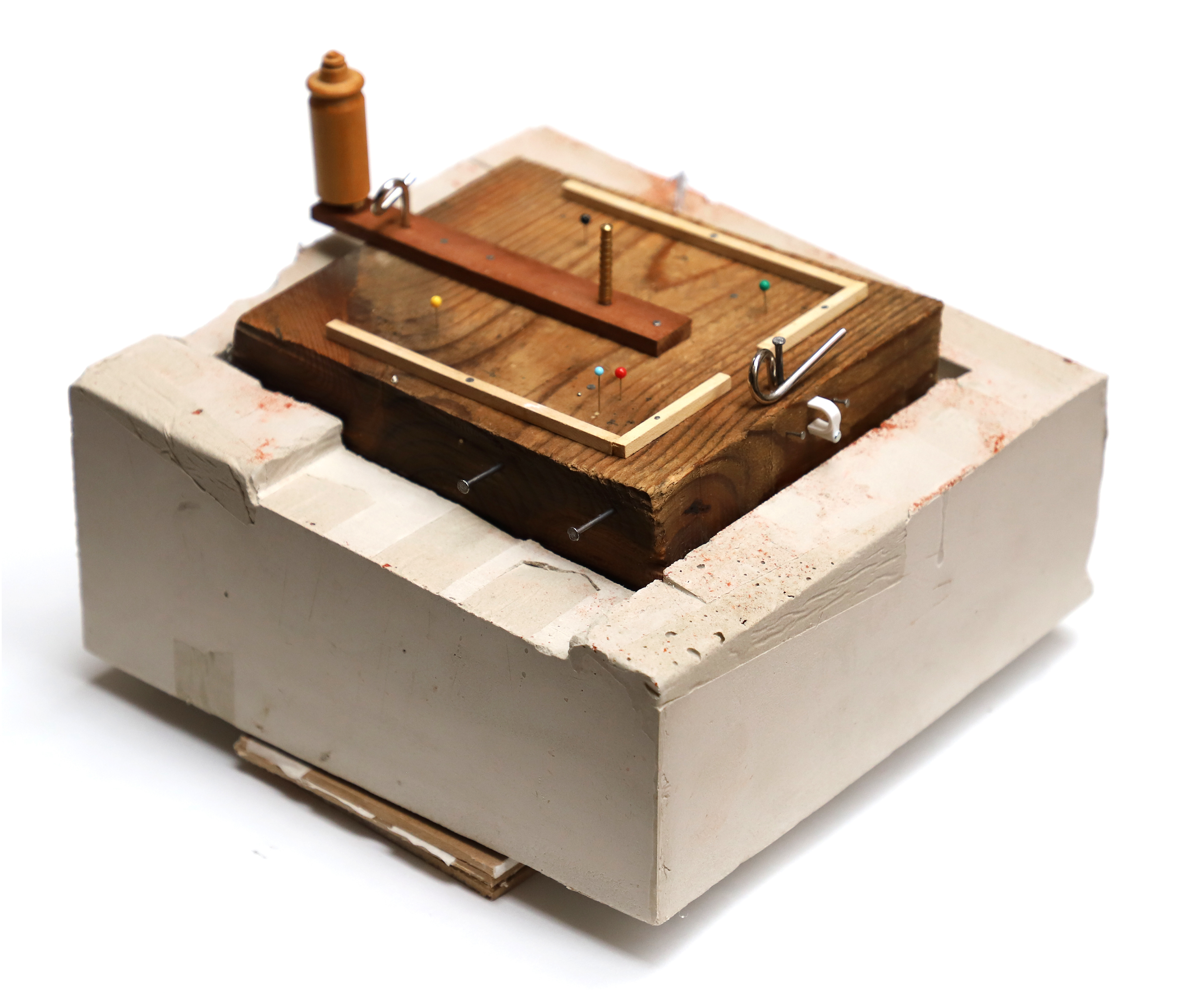
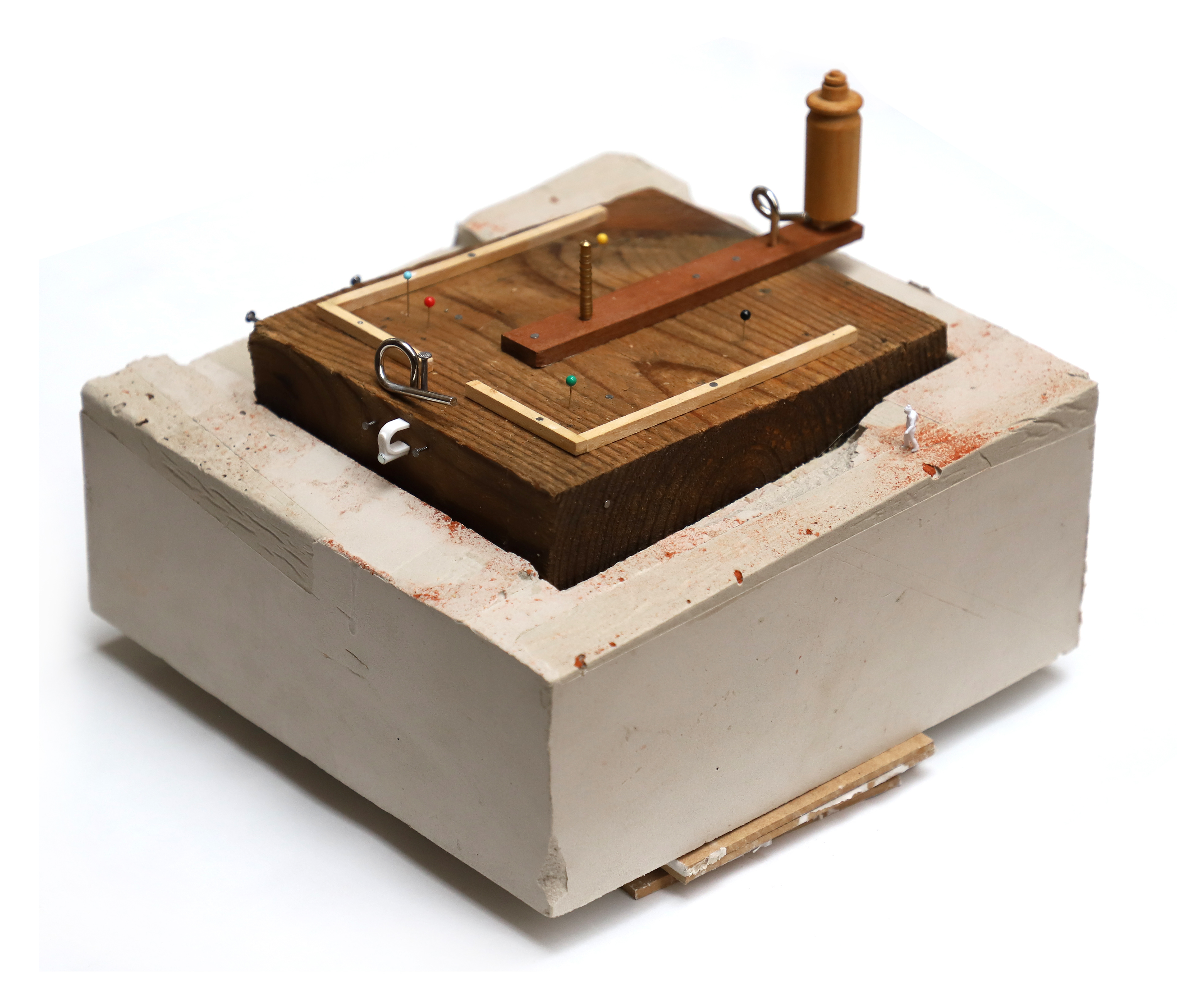

...
If we take as starting point Language as structurer of all human relations, we could understand better the relationships between the (Human) Subject and the (Urban) Object I refer to. Language, as described by the linguist and semiotician Ferdinand the Saussure (1857-1913) gives us a clear definition of the relation between the signifier and the signified, being the signifier the mode (word-sound) in which we refer to something, and the signified the concept of the thing-in-itself.
Then, how does this relate to architecture in any way? In nature the signified object, like a tree for example, can be related to different signifiers (a drawing of a tree, the word tree). In the urban realm the opposite happens, let’s take the example of a public square: the signified is not anymore a fixed physical element, rather it is a concept, the essence of the experience of what a public square means. Being the signified this conceptual image, the signifier relates to the infinite ways in which we can represent in the built realm the concept of the public square. This idea leaves us with a rather disturbing scene, that is, if what we try to represent with every single project in the city is nothing else than a concrete concept which refers to cultural experiences, then the very materialisation of that concept (design-construction) is a dubious exercise of selection among an infinite number of choices. Then we could agree on that it is the essence of the space what we struggle to materialise: the essence is the reality, its design and construction leaves us with an abstract representation of reality; (urban) objects exist only in relation to a deeper structure, which lies beyond the appearances hidden behind objects.
...
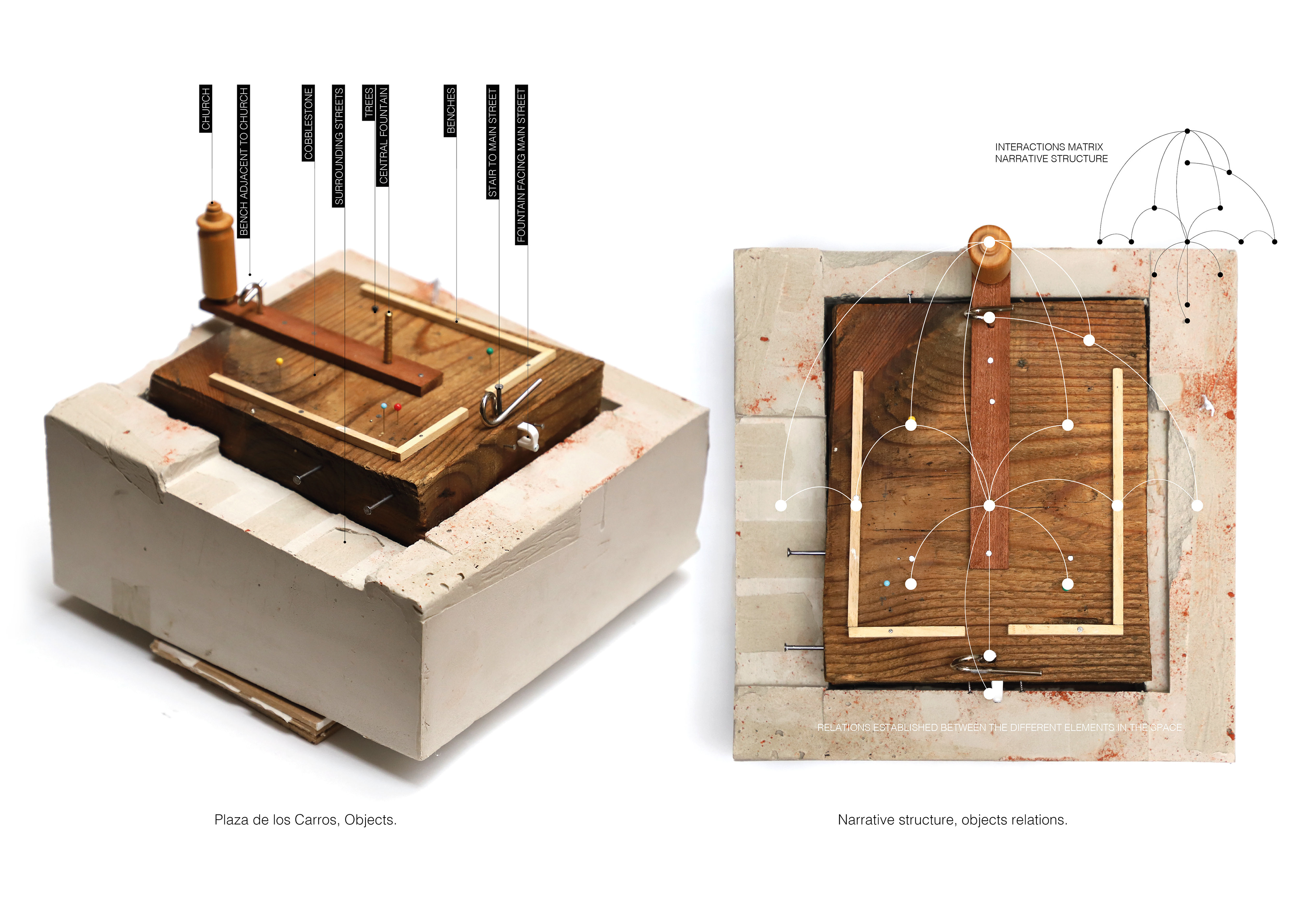
...
This sort of introduction helps me to present this project, which appeared as a methodological close reading of space, to become later a practical approach for the articulation of public spaces. I took the Plaza de los Carros in Madrid as arena for explaining better my theory. This place is a clear materialisation of the essence of a Public Square and is structured by different objects with different characteristics and potentials. The functioning of the Plaza as it does now do not responds to the specific design of its elements, but rather to the way in which they are organized, conforming -like in language- a coherent narrative. We can define, yet digging into Linguistics, objects that respond to terms like Fetish, Mythical, Authentic, Space (like in Heidegger’s theory). These concepts result from the interaction of the elements that conform the place, as seen in the diagrams presented. When trying to find the narrative behind the matter, we conclude that the essence of the place is much simpler than what we can see, our experience of the place is related with that essence strictly. By doing this reading in other locations, we can extract the essence of different public squares for comparison, obtaining -I argue- very similar narratives.
Why is it important now, especially in the architectural and urban realm to comprehend space in this way? In this moment of super production of designs and projects, especially in European cities, which are physically saturated, we need to think of new ways for solving problems in the field of architecture. My theory proposes a method that connects space with society in a fundamental level; the process of design and construction is the result of the comprehension of the essential experiential qualities of the space, and the ways for solving specific issues is not related strictly with construction per se, but with finding new ways for articulating the urban objects that already exist in the specific context. Architecture is not anymore related to matter but to culture, and actions like addition, extraction, connection or cultural appropriation can be equally effective.
...
...
